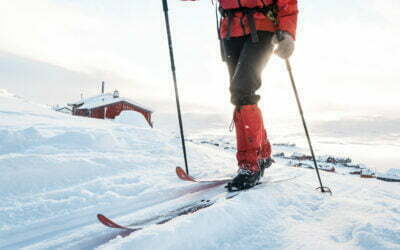The NFSA’s Dog-Code for children, adults, and keeping dogs outdoors
The Norwegian Food Safety Authority (“Mattilsynet”, the Norwegian state body with oversight of plants, animals, fish and food safety) has important guidance for children interacting with dogs and for keeping dogs outdoors. Let’s take a look.
Source: Mattilsynet
Guidelines for keeping dogs outdoors
The Norwegian Food Safety Authority’s advice for housing and handling dogs outside the house.
GENERAL STANDARDS
Dogs should not be tethered for the greater part of the day unless the space is sufficiently large and the dogs are trained/active frequently.

NFSA
OUTDOORS DOGS
The guidance for keeping dogs outdoors from the Norwegian Food Safety Authority regulates how dogs should be housed.
Source: Mattilsynet
Keeping dogs housed outdoors presents can challenge compliance with the Animal Welfare Act (Section 23) on the provision of opportunities for stimulating activities, movement, rest and other natural behaviour. But it’s still common, especially in sled dog environments. Dogs shouldn’t be left tethered for hours on end unless they’re kept in a place of sufficient size, and frequently exercised or allowed to be active.
The Norwegian Food Safety Authority’s guidance for keeping dogs outdoors

Written by Crister Næss
Former Åsnes fixture.Crister lives and breathes for skiing and the outdoors. Usually seen with a pair of prototype Åsnes skis on his feet or with his dog in the mountains of Voss.

Care for the outdoors dog
All good research on dog training agrees: planning is key for keeping a dog happy and thriving. This applies when adapting to new environments and weather conditions. Ideally, your dog would probably be inside the cabin or at home in front of the fireplace as much as possible when it’s cold outside. But if we make the decision to take the dog out into the cold, it’s our responsibility to make certain that the animal’s well protected.

Photography on tour
Capturing moments of magic with a camera can add an extra dimension to the tour experience. With a little system and some simple steps, you can become an even better photographer. Here are some tips how.

Training for multi-day tours and expeditions
Generally speaking, there’s no such things as being in “too-good shape” for a long tour. You really want to be in the best shape possible before you set off…

17 excellent gear hacks for the wilds
If you’re heading out to the hills, you want to pack as light as possible. In which case, your stuff must multi-task. In that spirit, here are 17 of the best gear hacks we know.

Boots for cross-country skiing in the backcountry
Nothing ruins the skiing experience as effectively as foot-related woe. Blisters. Wet socks. Sore arches. These things are the enemy. Good ski boots are incomparable – cherish yours once you’ve found them. Here’s a guide to help you find them.

Clothes for dogs in the cold
When it gets cold, spare a thought for you dog. Even dogs with a lot of fur can freeze if they don’t have an insulating undercoat. It doesn’t actually have to be much colder than -5° before many dogs can have problems – but there are still some who think dogs are unfreezeable. Here’s how to make sure they don’t.